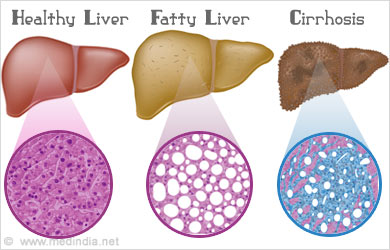
Liver Disease Risks – NAFLD
Non-Alcoholic Fatty Liver Disease
WHILE much is known about the damaging effects of alcohol on the liver, and indeed the body as a whole, perhaps less is known about the condition referred to as Non-Alcoholic Fatty Liver Disease (NAFLD).
Previously thought to be entirely harmless, NAFLD is estimated to affect up to one in five adults in the UK, forming a vast workload for liver specialists.
Although most people will have no symptoms and may never progress past the first stage, it has been recognised that a small group with Non-Alcoholic Fatty Liver Disease will unfortunately go on to develop cirrhosis and liver failure after many years.
Experts have stated that NAFLD may soon become the commonest reason for requiring a liver transplant.
By definition, NAFLD is fat in the liver due to causes other than alcohol. The healthy liver contains very little fat or none at all.
However, fat accumulating in liver cells prevents the organ from performing its vital functions. These include metabolising fats and sugars, detoxifying alcohol and other substances, as well as being involved in the body’s clotting system.
The first stage of NAFLD is fatty liver, with the majority of individuals remaining in this phase.
Non-Alcoholic Steatohepatitis (NASH)
However five per cent of these will advance to Non-Alcoholic Steatohepatitis (NASH), hepatitis meaning the liver has become inflamed. Persistent inflammation over many years results in the liver becoming fibrotic.
Fibrosis is the development of scar tissue around the organ, although it is still able to function.
Cirrhosis is the end stage, at which point the liver has become shrunken, scarred and is unable to work normally. Cirrhosis is also a risk factor for developing liver cancer.
MANY people are diagnosed with NAFLD after a routine blood test. If your liver function tests (LFTs) are abnormal, it is likely that you will undergo further blood tests, to investigate for hepatitis and other causes of altered LFTs.
NAFLD may be picked up on an ultrasound of your abdomen, sometimes in the presence of normal blood results. Further scans and a biopsy of your liver will be organised depending on the level of concern.
The increase in the number of people with NAFLD is closely linked to the rise in those classified as overweight or obese, with almost two thirds of adults in the UK now in these categories.
Persons with a sedentary lifestyle, poor diet and those who smoke are at greater risk. Several treatable conditions including Type 2 Diabetes, high blood pressure and raised cholesterol have been identified as predisposing to NAFLD.
While no single medication for NAFLD currently exists, it remains a very treatable disease certainly in the early stages.
Although not caused by alcohol, reduction or abstinence may still help, along with lifestyle alterations as highlighted above.
Professor Jonathan Fallowfield, Consultant Liver Specialist at the University of Edinburgh, advises: “Much liver damage is reversible. When people lose between seven and ten per cent body weight through dieting or weight reduction surgery, NASH resolves dramatically.
“It’s never too late.”









